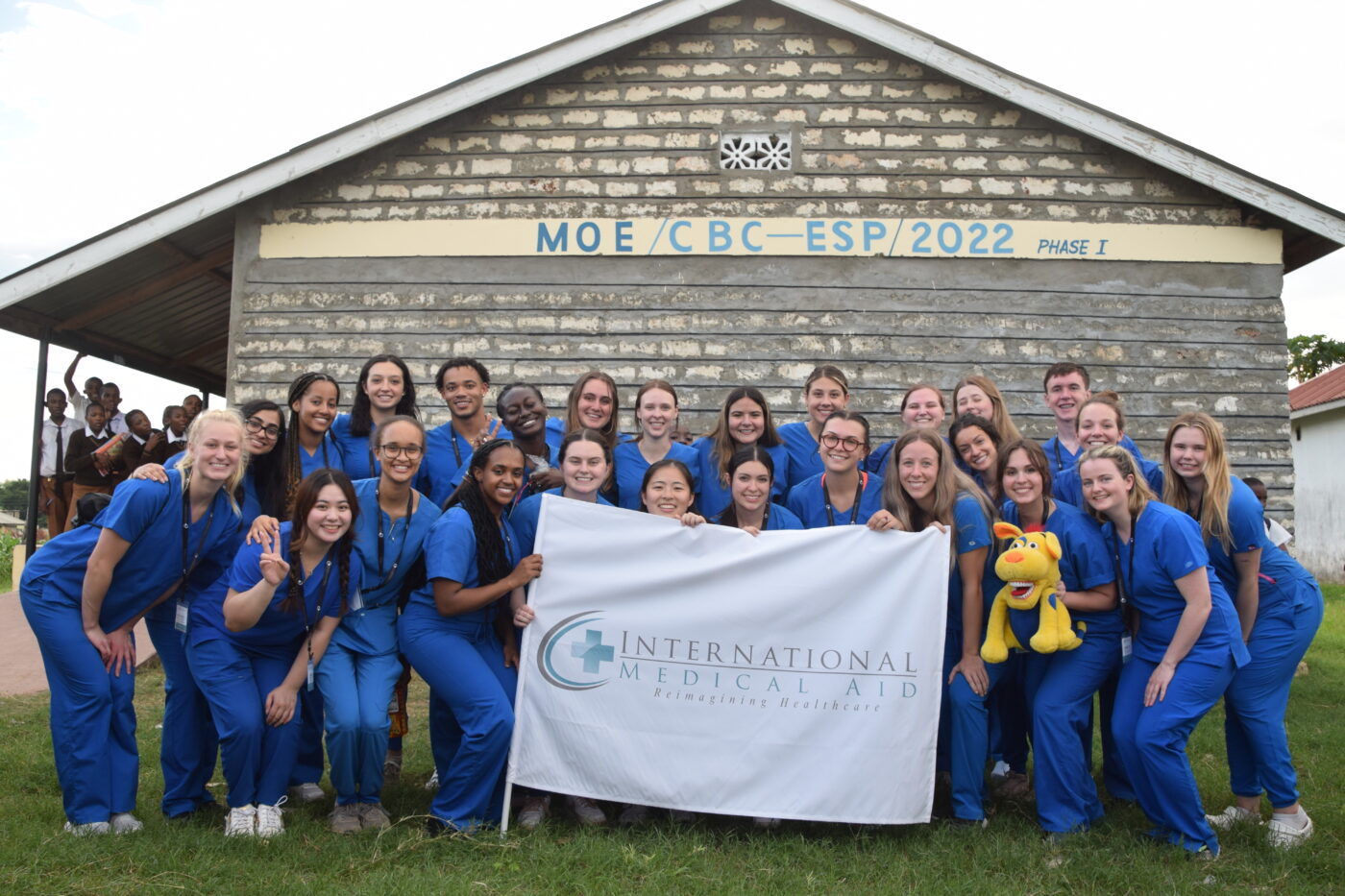Here at International Medical Aid, we’re passionate about seeing our students succeed. A huge part of that success comes from the essays you write. Those essays give admissions committees a closer look at you as an applicant. They help committees decide whether to bring you in for an interview. They’re the bridge that helps connect you.
Because your essays are so important, we want to dive in on a deeper level. We’ve already covered compelling vs. average personal statements. But today, we’re going to teach you how to show instead of tell in your essays. The information we’re sharing today is relevant to your personal statement and your secondary essays.
What a lot of applicants don’t realize is that admissions committees don’t care about what you did. Then why do they ask?!They care about why you did what you did. The why is the reason you’ll become a doctor. The why is the reason they’ll choose to admit you.
Here at International Medical Aid, we’re passionate about helping students succeed. That’s why we offer medical school admissions consulting. We review primary and secondary applications for students. We can review your essays and teach you how to show instead of tell.
In today’s article, we’re going to break down the differences between showing vs. telling. This is information we believe every applicant should understand to strengthen your application.
The Difference Between Showing vs. Telling
These sentences tell the admissions committee what you did.
When I worked as a receptionist at my gynecologist’s office, I saw a lot of pregnant women come in. They were full of worries and concerns about their unborn children.
These sentences show the admissions committee what you did.
When I greeted patients as they arrived at the gynecologist’s office, I could see the worry in their faces. I remember one patient in particular who was high-risk from a previous C-section. She worried endlessly about her precious, unborn baby boy.
The sentences that told what happened didn’t actually “tell” a whole lot. The admissions committee can gather that information from your application. It doesn’t say much. It’s ineffective.
The sentences that showed what happened actually tell the story. You can almost see a worried mother tenderly wrapping her arms around her belly, expressing her concerns to the applicant. We even know that she was carrying a boy, which further emotionally connects us to the applicant’s story.
Mastering the Art of Showing in Your Medical School Essays
Why “Showing” Matters More Than “Telling”
Advanced Techniques for Showing, Not Telling
To improve your essays, you need to move beyond basic descriptions and craft immersive, sensory-driven stories. Here are five advanced techniques to help you show effectively:
-
Use Sensory Details to Create Immersion
Instead of saying, “I volunteered at a clinic,” describe the scene: the antiseptic smell of the exam room, the soft hum of medical equipment, or the nervous tapping of a patient’s foot. Sensory details ground the reader in the moment and make your experience feel real. For example:
Telling: “I helped at a free clinic for underserved patients.”
Showing: “The clinic’s fluorescent lights buzzed faintly as I handed a worn coat back to a patient, her hands trembling from the cold and the weight of her new diagnosis.” -
Focus on a Single, Defining Moment
Resist the urge to summarize your entire experience. Instead, zoom in on one pivotal moment that encapsulates the larger story. A single interaction with a patient, a fleeting exchange with a mentor, or a moment of personal realization can reveal more about you than a broad overview. For instance, instead of recounting your entire summer volunteering, describe the moment you calmed a frightened child before a procedure and how it solidified your commitment to patient-centered care. -
Reveal Your Inner Thoughts and Emotions
Admissions committees want to know how your experiences affected you. After describing a scene, share your internal response. Did a patient’s resilience inspire you? Did a challenging case make you question your assumptions? Showing your reflections adds depth and authenticity. For example:
Telling: “I saw a patient recover from surgery.”
Showing: “As I watched Mrs. Rivera take her first steps post-surgery, her determined smile sparked a quiet awe in me, reminding me why I want to guide patients through their toughest moments.” -
Incorporate Dialogue or Specific Actions
Dialogue or detailed actions bring your story to life. Instead of saying a doctor was kind, describe how they knelt to eye level with a young patient or reassured a family with a gentle joke. These specifics make your essay dynamic and memorable. For example:
Telling: “The doctor was great with patients.”
Showing: “Dr. Patel crouched beside the exam table, her voice soft as she said, ‘We’re going to figure this out together, okay?’—a promise that eased the patient’s furrowed brow.” -
Connect the Experience to Your Future in Medicine
After showing a moment, tie it to your aspirations. How did this experience shape your understanding of medicine or your goals as a physician? This connection demonstrates foresight and purpose. For example, after describing a moment of patient care, you might write: “That encounter taught me that empathy is as vital as expertise, a lesson I’ll carry into every patient interaction as a future doctor.”
Common Pitfalls to Avoid
Overloading with Details
Too many sensory details or tangents can overwhelm the reader. Focus on a few vivid elements that enhance the story without overshadowing the main point. Ask yourself: Does this detail serve the narrative or distract from it?
Losing Focus on the “Why”
Avoid embellishing emotions or experiences to sound profound. Admissions committees can spot inauthenticity. Be honest about what you felt and learned, even if the lesson was small but meaningful.
Practice Makes Perfect
Transitioning from telling to showing takes practice, but it’s a skill that will serve you beyond your application. Start by revising a draft of your personal statement or secondary essay. Highlight sentences that summarize or list experiences, then rewrite them using the techniques above. For example, turn “I learned teamwork in the ER” into a vivid scene of collaborating with nurses during a chaotic shift, capturing the urgency and your role in it.
To refine your skills, try writing a 200-word vignette about a single moment from your journey to medicine. Focus on sensory details, emotions, and a clear connection to your goals. Share it with a mentor, peer, or our team at International Medical Aid for feedback. Over time, showing will become second nature, giving your essays the depth and authenticity that admissions committees seek.
How International Medical Aid Can Help
Crafting essays that show, not tell, is a challenging but rewarding process. At International Medical Aid, our admissions consulting services are designed to guide you every step of the way. Our experienced consultants can review your personal statement and secondary essays, providing detailed feedback to help you transform summaries into stories. We’ll work with you to identify the moments that best showcase your passion and potential, ensuring your application stands out.
Default Mode
It’s easier to tell than it is to show because showing requires more thought and effort. The first sentence that comes to mind is rarely the best. It takes time to develop thoughts that show. But we have good news for you. The more you practice showing, the more natural it will become. In time, you will naturally show instead of tell in your writing. This will help you in medical school and beyond!
Learning to "Show"
We recommend thinking about how you remember an experience. Those memories are what you want to share. Try to describe the memory instead of expanding the statement that’s on your resume. As you write, write in “color” instead of “black and white.” Provide enough details for the admissions committee to picture what you experienced.
As you write, you’ll begin with a basic “sketch.” Where did you volunteer? What did you do? Grab some colored pencils. Describe how what you did improved the lives of others. Sign your piece of art. Share how your experience benefited you, helped you grow or changed you as a person. Finally, hang your artwork on the wall! Explain why this university is where you want to go to school.
This isn’t a sketch made by a three-year-old, proudly displayed by Mom and Dad on the refrigerator. This is a beautiful, colored picture worthy of a frame on a wall.
An Essay That "Tells"
Now, instead of telling you how to show, we’re going to show you how to show. Here’s an example of a short essay that primarily tells instead of showing.
During my senior year of high school, I shadowed a physician named Dr. Coffer. He was a pediatrician. I shadowed him twice a week. During my time shadowing him, I went over patient charts with him. He explained the patient’s history to me and why they were coming in. He also saw new patients, and I learned how he got to know them. I observed the questions he asked them. I saw how he prescribed medications based on their symptoms. He was an MD, so he primarily treated symptoms. I later shadowed a DO, so I learned from both perspectives. But Dr. Coffer was an all-around great doctor, and I learned a lot from him.
An Essay That "Shows"
Now, here’s an example of the same essay that shows instead of just telling.
During my senior year of high school, I shadowed Dr. Robert Coffer. He was my best friend’s pediatrician. I thought I wanted to be a pediatrician, but I wasn’t sure, so I called his office and asked to shadow him. It turned out that Dr. Coffer loved having high school students shadow him.
I showed up bright and early every Tuesday and Thursday morning at Dr. Coffer’s office. I saw his schedule for the day, so I knew whether to anticipate new patients or returning patients. It felt weird to call them patients since most were elementary school-aged kids. But while they were smaller people, they had bodies that contracted illnesses, diseases and disorders, just like adults.
I remember one boy who came in in his pajamas. He was coughing a lot and complaining that his throat hurt. When Dr. Coffer inserted a long Q-tip into his nose to test him for strep throat, he cried. I was touched by how Dr. Coffer distracted the boy and made the procedure more bearable. He ultimately sent the boy home with a prescription for amoxicillin. He told him that resting in bed and drinking plenty of fluids would have him feeling better in no time.
Dr. Coffer interacted with all of his patients with the same mannerisms, but with an individual approach. It was apparent that, while the kids didn’t want to be at the doctor, they didn’t mind having Dr. Coffer as their doctor. I didn’t know for sure what kind of doctor I wanted to be, but I knew I wanted to treat my patients the way Dr. Coffer treated his.
These essays describe the same experience, but they couldn’t be more different. The first essay feels like a paragraph copied off of a resume. The second essay feels like a story where a real experience is told. The second essay is the kind of essay you want to write. Let’s look at what this applicant did right.
- She created a connection. She knew someone who knew Dr. Coffer. Lots of internships or shadowing experiences begin this way.
- She described what it was like seeing young patients. Instead of simply referring to them as pediatric patients, she talked about them.
- She allows the reader to have a glimpse into what Dr. Coffer was like with his patients.
- She describes a boy getting an unpleasant test to see what’s wrong.
- She also shines a light at the end of the tunnel. When kids get sick, it’s all they can think about. Knowing he would feel better would make all the difference for him.
Conclusion
Like we said before, it takes practice. Don’t feel like you have to write the perfect essay or no essay at all. There’s no such thing as a perfect essay! Even essayists could find ways to improve the quality of their writing. But by describing what happened and “coloring” a picture, you’ll start to show more and tell less.
We’re here to help. We hope this explanation of showing vs. telling helps you as write your personal statement and your essays for your secondary applications. If you’re not sure whether you’re showing or telling, reach out to us! We offer medical school admissions consulting, which includes primary and secondary application review. We’d be happy to go over your essay with you and provide feedback to improve the quality of your writing. IMA is here to help you on your journey to medical school.





